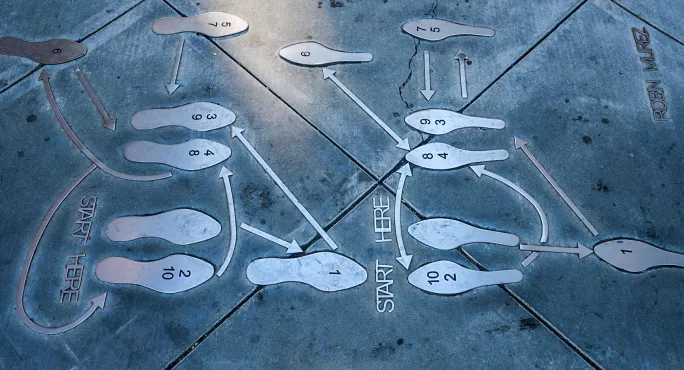
How we restructured our multi-academy trust

Many multi-academy trusts face a common challenge: getting the balance right between providing consistent central services and having the flexibility to address local needs.
Particularly as trusts grow and evolve, and operate in an ever-changing environment, their central structures can become fragmented, hindering collaboration and limiting efficiency.
This is the situation that our trust encountered after we grew at break-neck speed back in the early days of the academies movement, from 2012 onwards.
Fast-forward 10 years, and our operating structures, which had evolved throughout that time, were seriously out of kilter, leaving us with no centrally defined approach to how we were regionally structured.
Different regional models had sprung up for each function as a result: HR had divided the country into five regions, IT four, and finance and estates three.
A school in the middle of the country could be in four different regions depending on the function, and it became difficult to centrally coordinate any kind of operational support, exacerbated by different ways of working in each region and across each function.
Defining trust objectives
We decided to invest some time in redesigning the central organisational structure and launched a project to review this in September 2022.
Focused on an ambition to offer an excellent (and consistent) service to our schools, we defined our objectives around increasing:
- Alignment
- Collaboration
- Clarity
- Financial stability
We engaged with colleagues from across the central team, regional teams and our schools, and drew up a five-region model that was consistent across all functions, with schools spread as evenly as possible, resulting in an average of 11 schools per region.
- Investigation: How trusts use teacher pay freedoms
- 7 practical ways our MAT is tracking attendance
- Could a ‘Tinder for trusts’ help match MATs and schools?
We introduced a new organisational structure, with regional managers for each function, led by two regional education directors (primary and secondary). When it comes to organisational design, the key is to keep things as simple as possible.
We complemented this new structure with defined regional offices and new improved ways of working, all of which we launched in line with our new model in September 2023.
New rhythms of working
Each region now follows a set meeting rhythm, bringing regional managers together monthly under the leadership of their regional education directors, to strategically plan and resolve current issues.
Each regional team also comes together once a term to plan, problem-solve and share ideas, which helps to build a sense of regional identity and enables strong collaboration.
So, what impact have we seen? Staff have told us that the new regional structure has given them the opportunity to work more strategically, that there is better cohesion across regions as well as within their own department, and that they enjoy a strong sense of identity from being part of a regional team.
In a recent survey, 95 per cent said they feel that the new regional meetings are helping to improve the way we work. The real test, of course, is what our schools and principals think: verbal feedback so far has been positive, and we will hear more from them in our annual survey later in the year.
Tips for organisational restucturing
There is still room for improvement, and we are making plans to refine our meeting rhythm and develop our regional office design. But we now have the core structures in place, which our regions can adapt, innovating with and learning from each other.
For any leadership team about to embark upon an organisational restructure, we would recommend the following tips:
- Carefully plan the level of centralisation you wish to provide for each of your services.
- Engage with your principals throughout the process, so that they can feed into the designs and feel part of the journey.
- Keep the structures and the model simple to enable effective and efficient ways of working.
More and more academy trusts are considering their organisational structure and whether it truly serves both their strategy and the day-to-day work.
These feel like big, challenging programmes of work - and they are. But with the right planning and thinking, the process need not be daunting.
For more detail on the process that Academies Enterprise Trust went through, take a look at AET Guides: Redesigning the central structures of an academy trust.
Ele Lewis and Ed Arthur are respectively director of strategy and head of strategy at Academies Enterprise Trust
For the latest education news and analysis delivered directly to your inbox every weekday morning, sign up to the Tes Daily newsletter
You need a Tes subscription to read this article
Subscribe now to read this article and get other subscriber-only content:
- Unlimited access to all Tes magazine content
- Exclusive subscriber-only stories
- Award-winning email newsletters
- Unlimited access to all Tes magazine content
- Exclusive subscriber-only stories
- Award-winning email newsletters
You need a subscription to read this article
Subscribe now to read this article and get other subscriber-only content, including:
- Unlimited access to all Tes magazine content
- Exclusive subscriber-only stories
- Award-winning email newsletters
- Unlimited access to all Tes magazine content
- Exclusive subscriber-only stories
- Award-winning email newsletters
topics in this article



